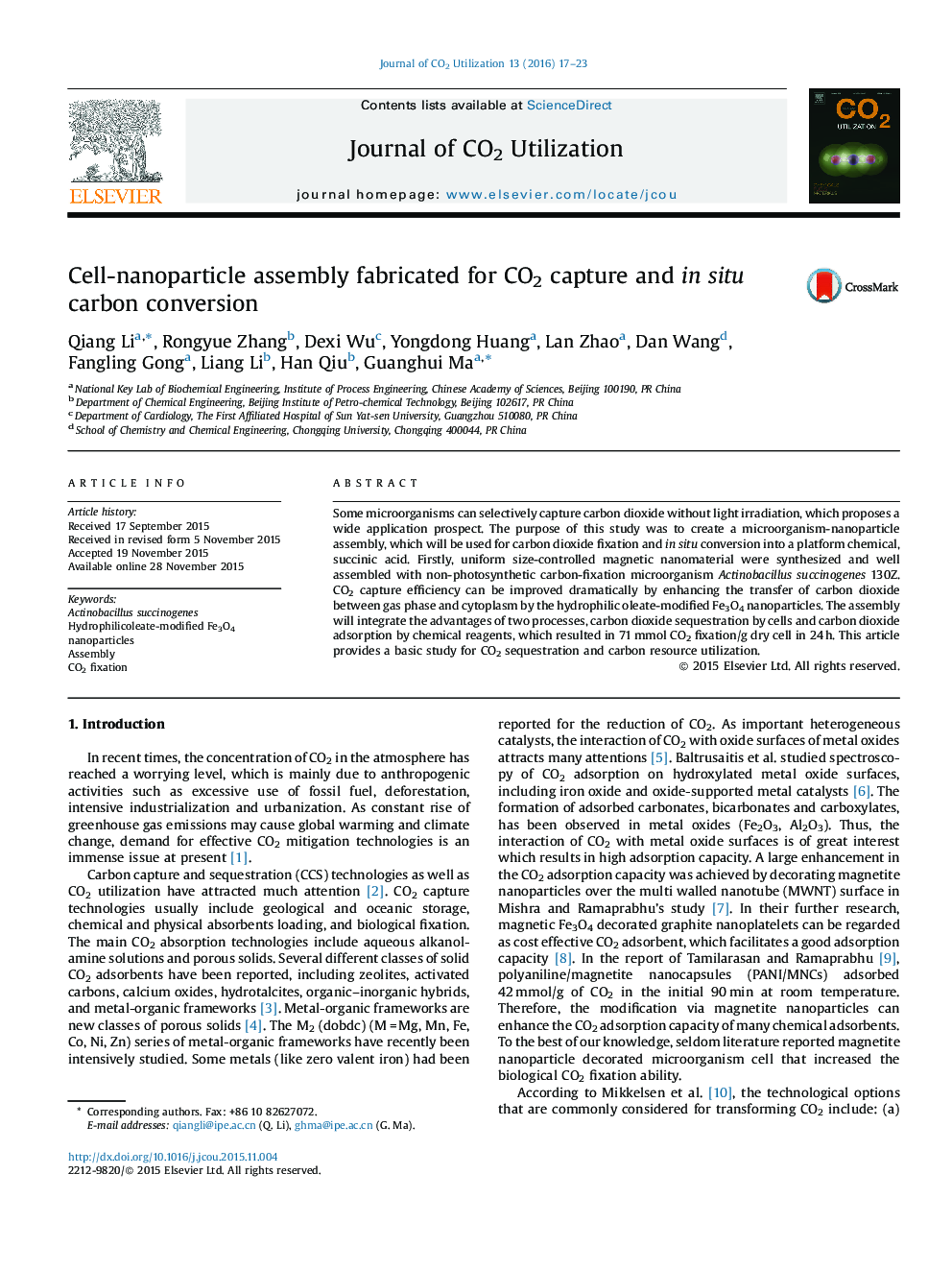| کد مقاله | کد نشریه | سال انتشار | مقاله انگلیسی | نسخه تمام متن |
|---|---|---|---|---|
| 63625 | 48245 | 2016 | 7 صفحه PDF | دانلود رایگان |
• Magnetic nanoparticles were synthesized and modified with hydrophilic external layer.
• Modified magnetite nanoparticles were used to decorate A.succinogenes cell wall.
• Single cell-nanoparticle assembly was fabricated.
• CO2 was capture and in situ bioconversion to CO2-derived succninate.
Some microorganisms can selectively capture carbon dioxide without light irradiation, which proposes a wide application prospect. The purpose of this study was to create a microorganism-nanoparticle assembly, which will be used for carbon dioxide fixation and in situ conversion into a platform chemical, succinic acid. Firstly, uniform size-controlled magnetic nanomaterial were synthesized and well assembled with non-photosynthetic carbon-fixation microorganism Actinobacillus succinogenes 130Z. CO2 capture efficiency can be improved dramatically by enhancing the transfer of carbon dioxide between gas phase and cytoplasm by the hydrophilic oleate-modified Fe3O4 nanoparticles. The assembly will integrate the advantages of two processes, carbon dioxide sequestration by cells and carbon dioxide adsorption by chemical reagents, which resulted in 71 mmol CO2 fixation/g dry cell in 24 h. This article provides a basic study for CO2 sequestration and carbon resource utilization.
Journal: Journal of CO2 Utilization - Volume 13, March 2016, Pages 17–23
